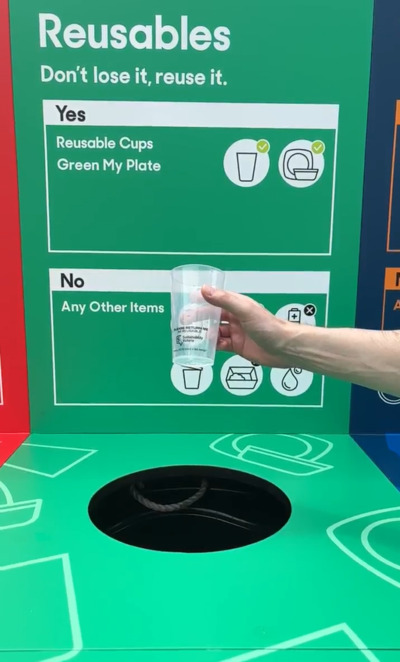This post was originally published on Sustainability Matters

Single-use waste reduction targets have been exceeded at this year’s Australian Open, with Tennis Australia’s projection of 100,000 reusable items washed increased by almost 37,000.
Through the partnership between Sustainability Victoria and Tennis Australia, thousands of reusable cups, made by Victorian company bettercup, replaced single-use cups in the Courtside Bar and bars around Garden Square.
With additional reusable cups, bowls and plates served by vendors, the event saw a record-breaking 136,932 items washed for reuse, nearly doubling the result from last year’s event.
During the three-week tournament, the dishwashing team from Green My Plate collected, washed and returned over 69,000 bettercups alone, representing 552 kg of single-use cups avoided.
Matt Genever, Sustainability Victoria CEO, said, “It’s fantastic that so many people embraced the reusable cups at AO25, diverting waste from landfill and reducing their environmental impact.
“The simplicity of the model was key to its success. Patrons enjoyed their drinks in the reusable cups then dropped them at clearly marked collection points for washing.
“The reusable bettercups will also be repurposed for other events across Victoria, providing a long-term solution to waste reduction.”
The reusables bin at the Australian Open 2025 (AO25). Image: Supplied.
Tennis Australia’s Director of Sustainability, Matthew Nicholas, said, “We’re proud of the steps we’re taking to reduce single-use consumption at the Australian Open.
“On top of the almost 137,000 single-use items diverted from waste streams through the AO Reusables program, we recycled over 74 tonnes of glass and 64 tonnes of cardboard. We also tackled more challenging tournament-specific waste streams, sending approximately 16,000 tennis ball tubes and 5 km of nylon racquet string offcuts to dedicated recycling pilots.”
Sustainability Victoria will continue to support Tennis Australia in its future sustainability strategy as Victoria transitions to a circular economy with less waste and emissions.
Top image: Supplied.





0 Comments